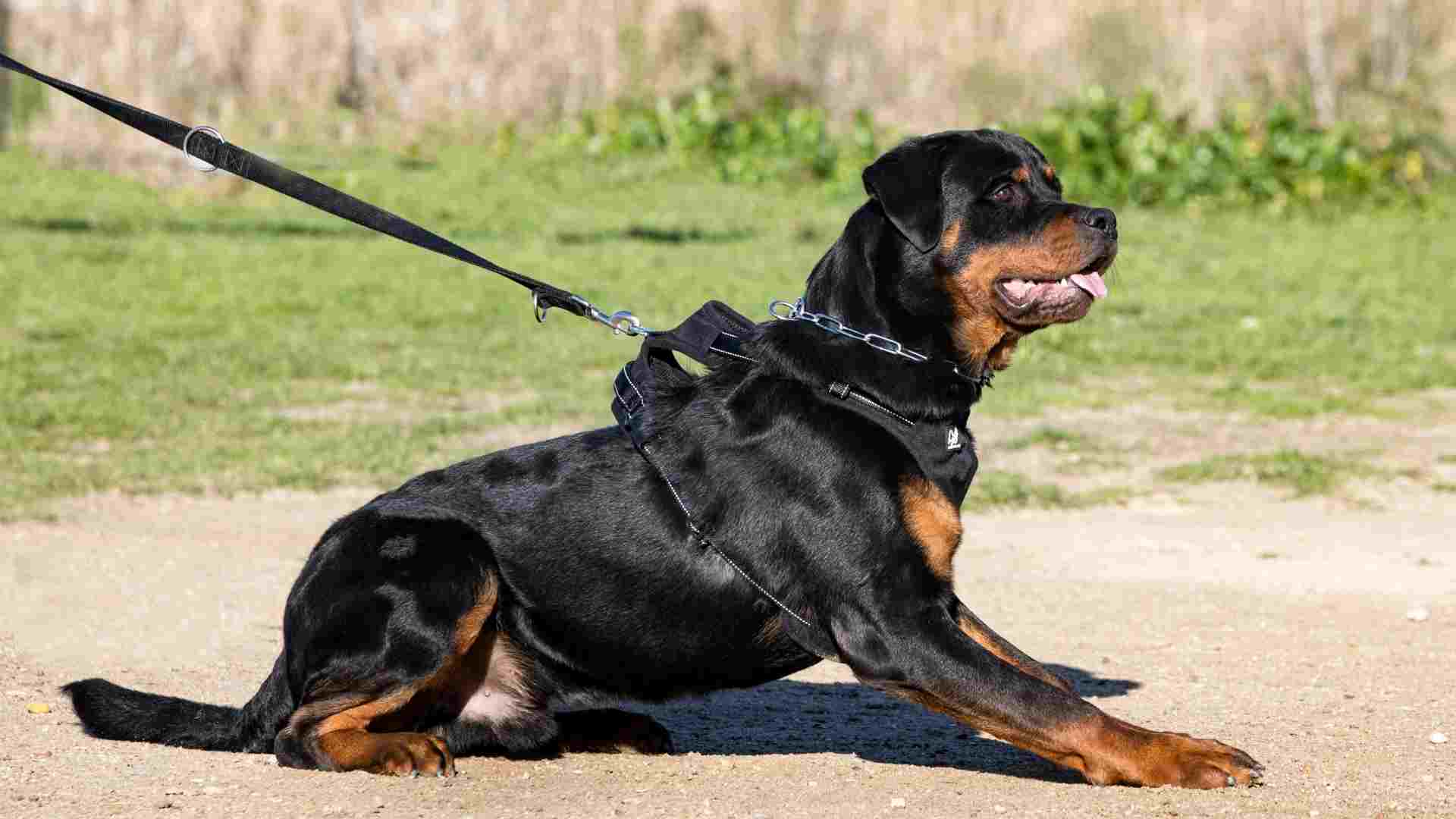Did you know that a staggering 99.12% of dogs exhibit at least one behavior considered problematic? That’s not a minor number. According to researchers from the Dog Aging Project, even the most lovable pups can have quirks that challenge their humans.
Now, not all quirks are created equal. Some dogs have a curious habit of doing their own thing, no matter how many times they’ve heard the command “sit.” This isn’t about being bad—it’s often tied to an independent nature, or even what some trainers call a stubborn streak. It’s that headstrong, strong-willed behavior that keeps many pet parents on their toes and dog trainers refining their training methods.
The AKC notes that many of the most stubborn dog breeds, like working dogs, aren’t trying to be difficult. They’ve been originally bred to think independently, often for tasks like hunting or guarding. They respond better when training taps into that drive, rather than fights against it.
So, rather than labeling a stubborn dog as “difficult,” it might be more useful to see it as a challenge to engage their intelligence, build trust, and apply positive reinforcement with consistency and patience.
Stubborn Dog Breeds
Here are the most stubborn dog breeds:
1. Beagle
The Beagle is a walking paradox: charming yet headstrong, playful yet single-minded. These medium-sized dogs are powered by one of the most advanced noses in the animal world, so when they catch a scent, they’re gone.
That powerful sense of smell is part of what makes them so stubborn, especially when they’re nose-down and in full pursuit of something that smells “interesting.”
Originally bred for hunting, they are independent thinkers who thrive on daily mental stimulation, and a bit of patience from their humans. They’re not ignoring you to be rude—they’re just doing what their DNA tells them.
Scent-driven adventurers: Their instinct to explore by nose often overrides their ability to recall on command.
Vocal personalities: Known for a distinctive baying howl, they don’t hesitate to speak their minds, especially when bored or excited.
Great with Kids: According to PetMD, they tend to get along well with children and seniors alike, making them a popular family pet.
White-tipped tail: A quirky physical trait that hunters once used to keep track of them in dense brush.
Highly energetic: These dogs need regular training to avoid behavioral issues— games, and sniffing sessions included.
Working talent: They often work in airport security as part of the “Beagle Brigade” due to their exceptional scent detection skills.
Curious by nature: Their personality often leads them to follow their nose into mischief, even if that means running headfirst into an obstacle.
2. Bulldog
When you think of stubborn dogs, the Bulldog is near the top of the list, mostly because they simply refuse to be rushed. Known for their iconic wrinkled face and slow-moving charm, Bulldogs tend to approach training with a mix of indifference and flat-out resistance. But don’t mistake that for low intelligence.
Bulldogs are fully aware of what you’re asking—they just prefer to make decisions on their terms. That said, their loyal nature and lovable goofiness make them fantastic companions for families who value calm vibes over lightning-fast responses.
Slow but deliberate: Bulldogs often appear relaxed, but their strong-willed nature makes them quietly defiant during training.
Selective hearing: May seem like they ignore commands, but often they’re simply deciding whether the request is worth their effort.
Minimal needs: Unlike energetic breeds, Bulldogs are content with short daily walks and mellow indoor time.
Heat-sensitive: Due to their physical build, they require special attention in warm weather—too much exercise can be risky.
Persistent personality: Once they set their mind to something—whether it’s refusing to move or claiming a couch spot—it’s tough to change their course.
3. Dachshund
The Dachshund is equal parts brave and bull-headed. Originally bred for hunting badgers, this dog is fearless—sometimes to a fault. That tenacity fuels its stubborn streak, especially when it decides that your commands don’t quite align with its agenda.
Add in a loud bark and an independent mindset, and you’ve got a dog that demands creative, firm, and positive training to stay focused. According to WebMD, their quirks are part of the charm, and with the right approach, they become loyal, clever companions.
Size and style variety: Available in standard and miniature, with coat types including smooth, wirehaired, and longhaired.
Olympic legacy: The first-ever Olympic mascot, Waldi, was a Dachshund, representing the 1972 Munich Games.
Vocal watchdogs: Despite their small stature, their bark is impressively loud and effective as a deterrent.
Historical favorites: Once adored by artists and even royalty like Queen Victoria, they remain a widely loved pet.
Back issues: Due to their long spine, they’re prone to intervertebral disc disease and need careful handling, especially on stairs or couches.
4. Rottweiler
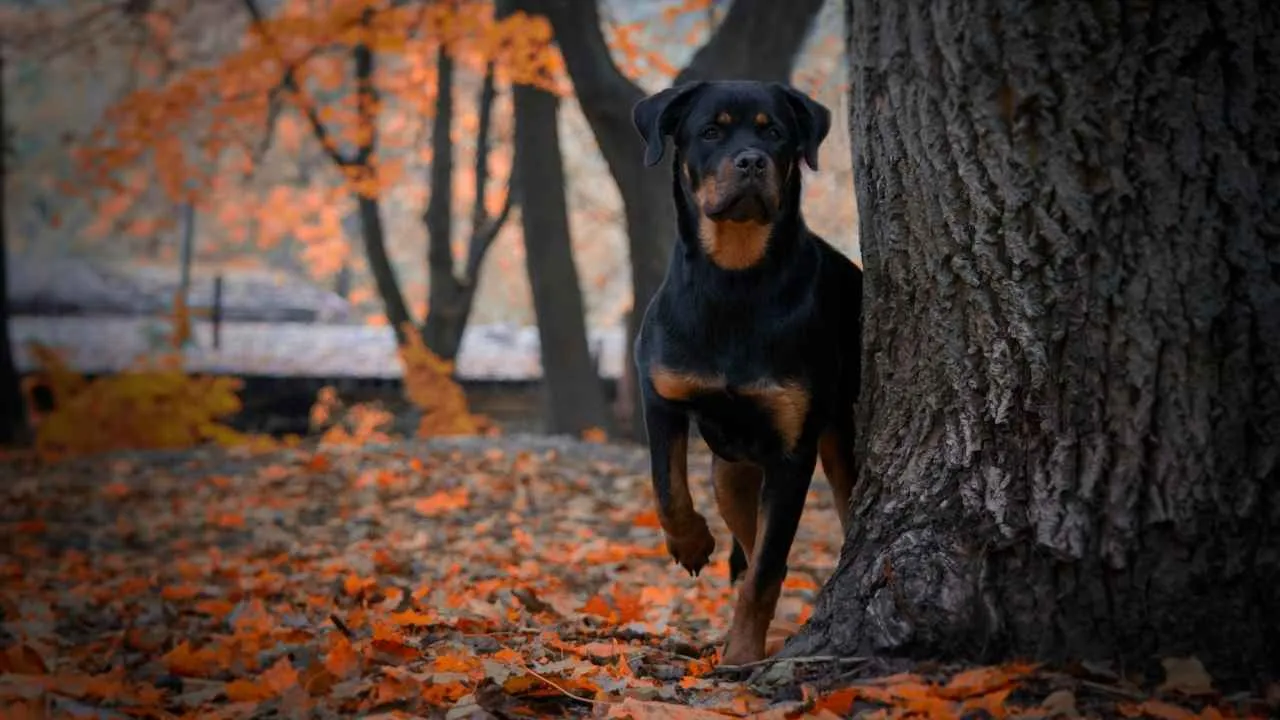
Rottweilers are one of the most powerful dog breeds, both physically and mentally. Their confidence, loyalty, and natural guarding instincts make them excellent protectors, but that same confidence can lead to classic stubborn behavior, especially if they don’t respect the owner giving commands.
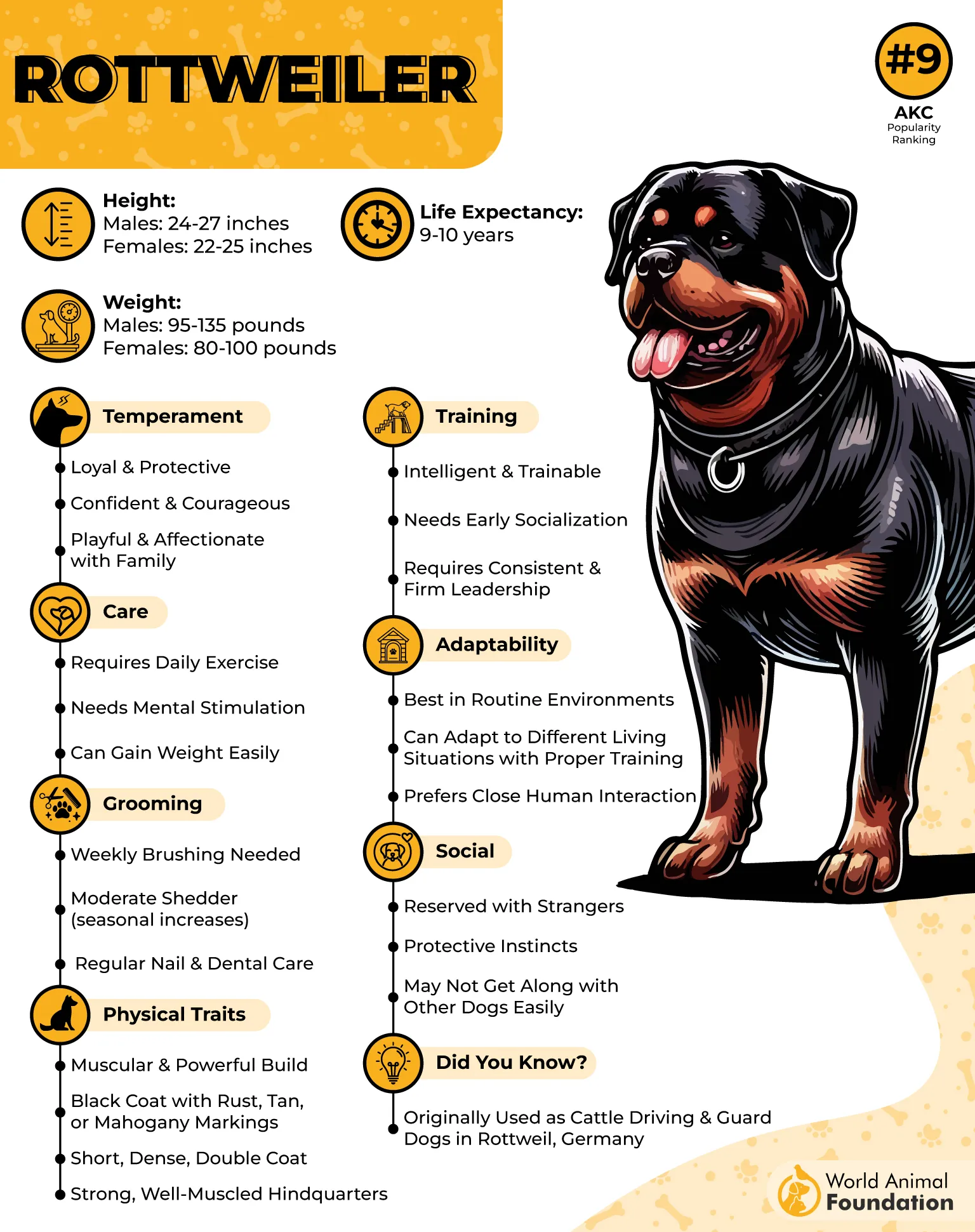
This is a dog that needs structure, leadership, and a job to do. If a Rottweiler senses a lack of direction, they’ll happily take charge themselves—and that’s when training becomes a battle of wills.
Signature look: Always black with distinct rust-colored markings on the face, chest, and legs.
Lap dog energy: Despite their size, many genuinely believe they’re small enough to curl up on your lap.
Loud snorers: Be ready for nightly rumbling—Rottweilers are known for their deep, rumbling snores.

Herding instincts: May gently bump or lean into people as a way of guiding or seeking attention.
Task-driven minds: They thrive when given purpose, whether it’s agility work, obedience drills, or protection training.
Reserved with strangers: Rottweilers form deep bonds with family but may seem aloof or cautious around new people.
5. Jack Russell Terrier
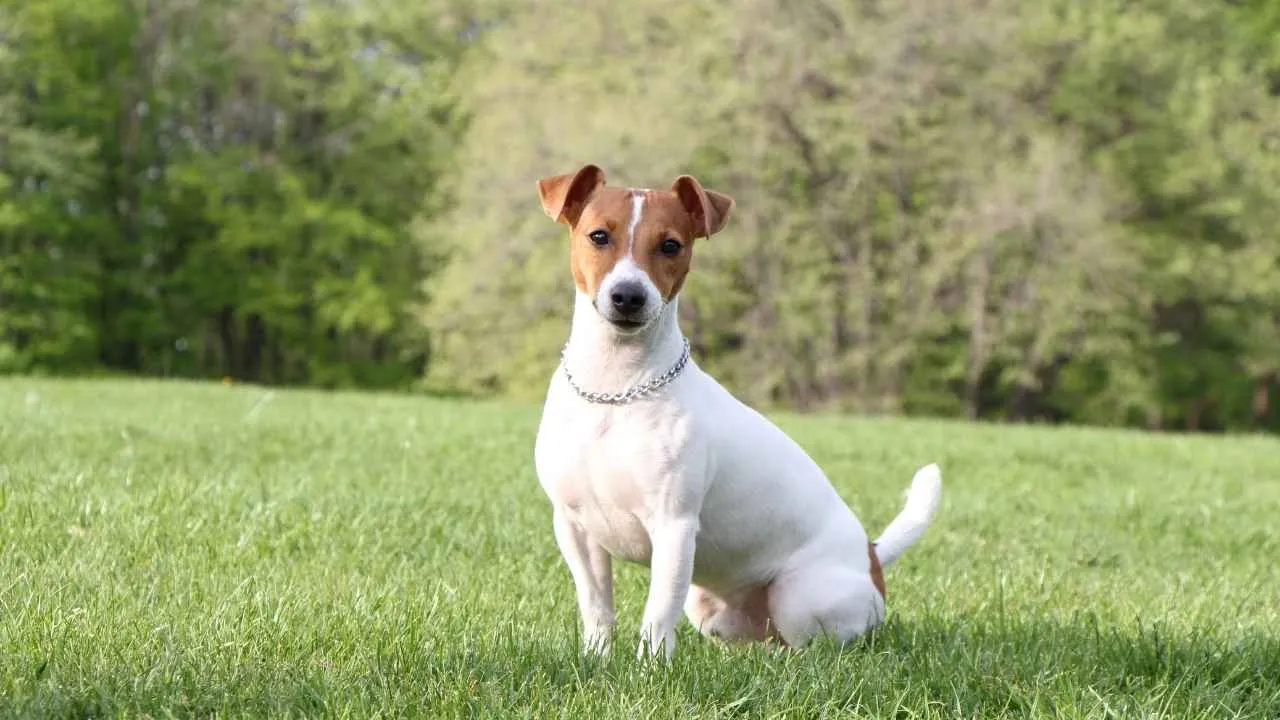
The Jack Russell Terrier is a firecracker. They were bred for fox hunting. These dogs are all-in: highly energetic, fearless, and relentlessly focused. That same drive makes them one of the most stubborn dog breeds out there.
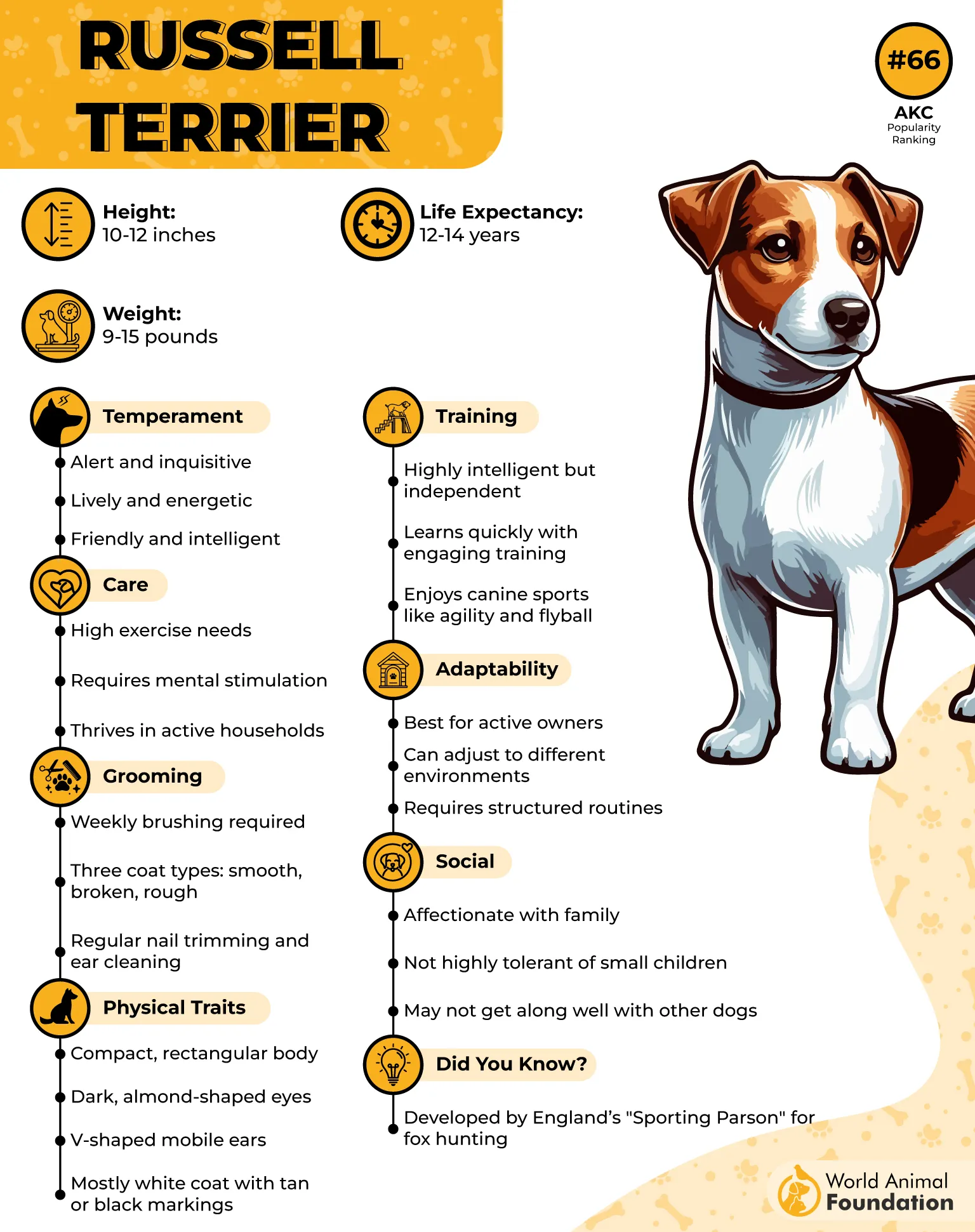
They are fueled by pure determination, which makes consistent training a must. They love to run, dig, and bark, and without enough mental challenge, they’ll find their own—sometimes destructive—ways to stay busy.
Jumping powerhouses: These dogs can leap up to five times their height, making fences and barriers almost laughable.
Triple coat variety: Jack Russells come in smooth, broken, and rough coats, all of which can shed seasonally.
Natural diggers: Their strong hunting instincts often lead them to dig holes in yards, beds, or anywhere that looks interesting.
Always on alert: Though vocal, they make excellent watchdogs thanks to their sharp senses and protective streak.
Hollywood regulars: Their bold personalities and trainability have earned them starring roles in several movies and TV shows.
Boundless energy: These dogs require structured activities, challenging games, and plenty of exercise to keep their dog’s behavior in check.
Smart: Their independent nature can be managed with firm routines and reward-based methods that keep them engaged.
6. Shiba Inu
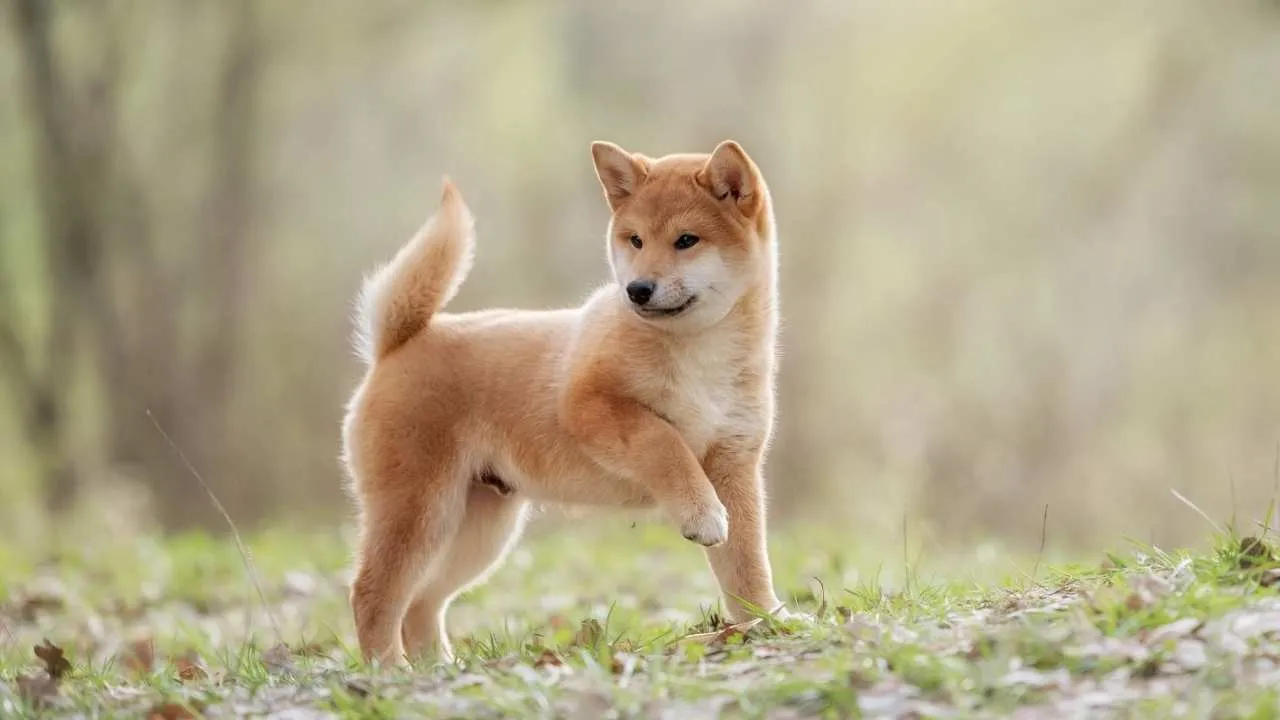
The Shiba Inu may be small, but it walks through life like it owns the place—and honestly, it kind of does. Known for a bold, almost cat-like demeanor, this breed thrives on making its own decisions, often ignoring commands unless it feels like cooperating.
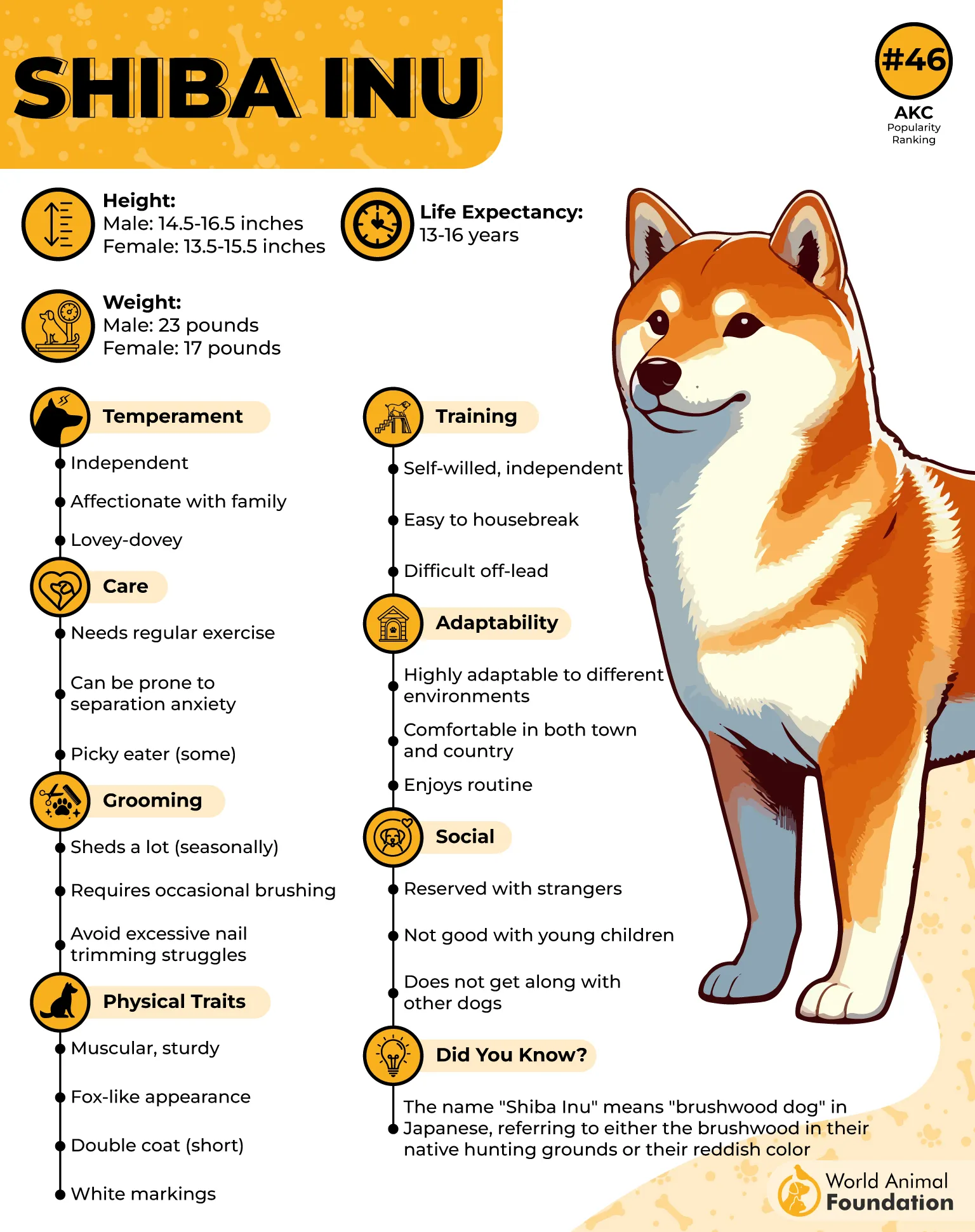
That’s not disobedience—it’s just classic Shiba attitude. Early training at a young age is key if you want to instill any sort of structure. Even then, you’ll need patience and creativity to teach this fiercely independent dog anything long-term.
Independent to the core: Shibas are famous for doing what they want, when they want, often tuning out basic commands.
Early socialization: Introducing them to other dogs and people during puppyhood helps manage reactivity and stubbornness.
Pristine self-groomers: Much like cats, they keep themselves impressively clean and often dislike getting dirty.
Escape artists: With a sharp mind and athletic build, they’re known to slip collars or dart through open doors without hesitation.
“Shiba scream”: When upset, excited, or restrained, they emit a loud, dramatic yelp that’s impossible to ignore.
7. Siberian Husky
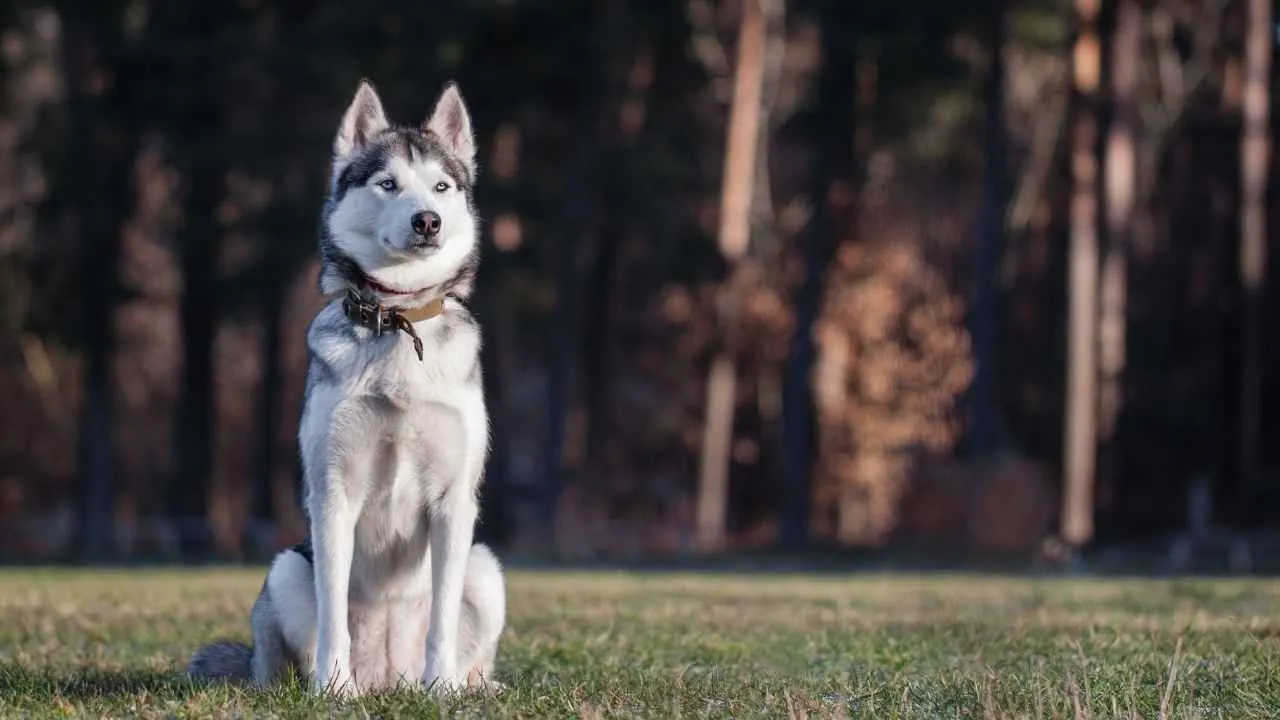
If you’re looking for a dog that marches to the beat of its drum, the Siberian Husky might just sprint past you before you finish the sentence. With a strong independent nature, a love of freedom, and an almost comical resistance to authority.
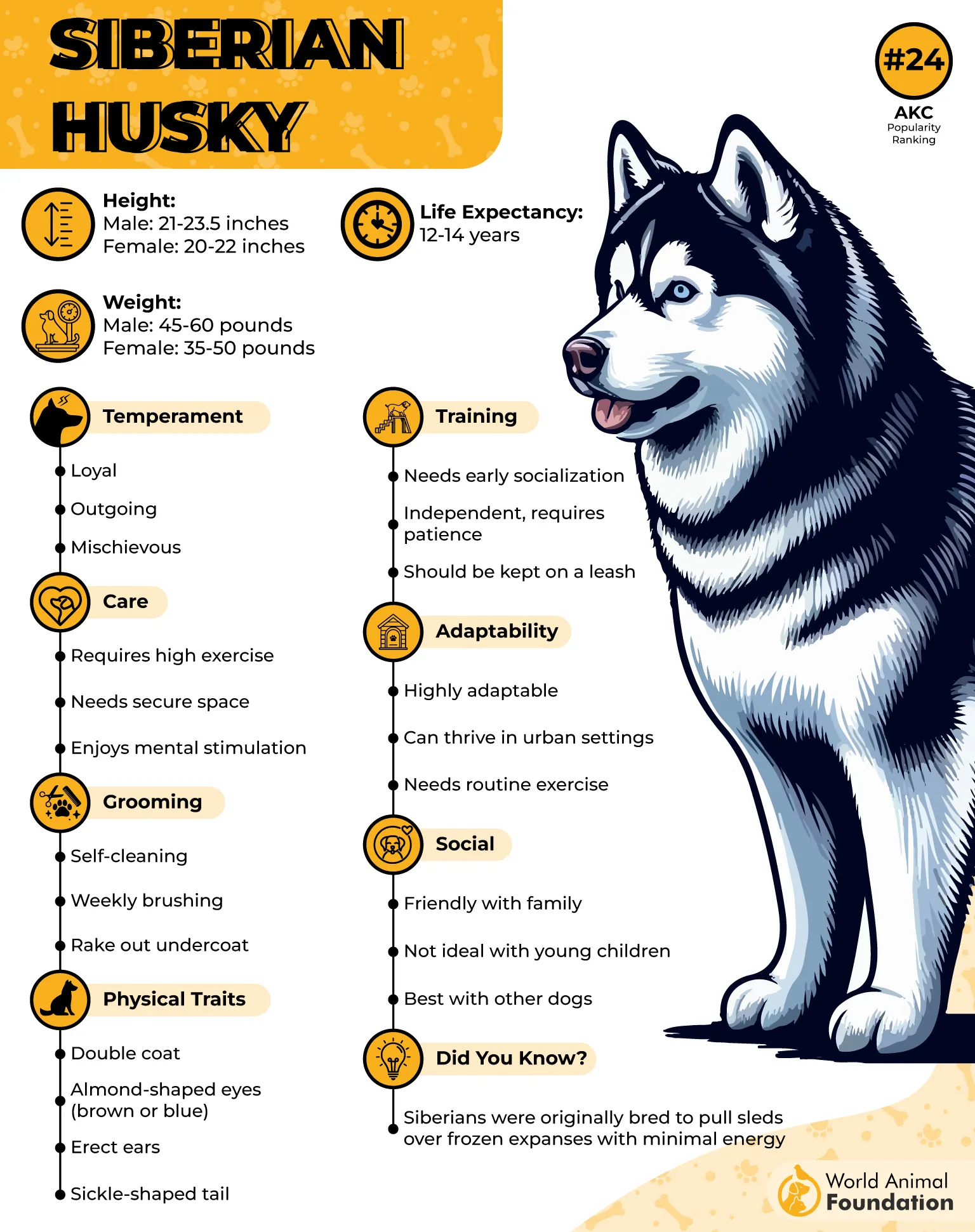
Their energy is off the charts, and their short attention spans make consistent training a true challenge. Originally bred as a working breed, they thrive when given purpose, but left unchecked, they’ll turn your yard into a launchpad for their next escape.
Ancient lineage: They are one of the oldest known dog breeds, dating back over 3,000 years.
Cold-weather champions: Bred for the Arctic, they can withstand temps as low as -75°F, making them incredibly resilient.
All bark, no wolf: Though their looks suggest otherwise, Huskies are not wolf-dog hybrids.
Natural vocalists: Rather than barking, Huskies use dramatic howls and “talking” sounds to communicate with their humans.
Wanderlust-driven: Their relentless urge to roam means fenced yards and leashes are non-negotiable.
Stunning eyes: Huskies can have striking blue, brown, or even one of each, adding to their dramatic presence.
Snow nose quirk: Some develop a light pink or brown “snow nose” in winter that fades with the seasons.
Best for experienced owners: Their strength and sharp instincts require confident, hands-on guidance from a patient dog trainer.
8. Afghan Hound
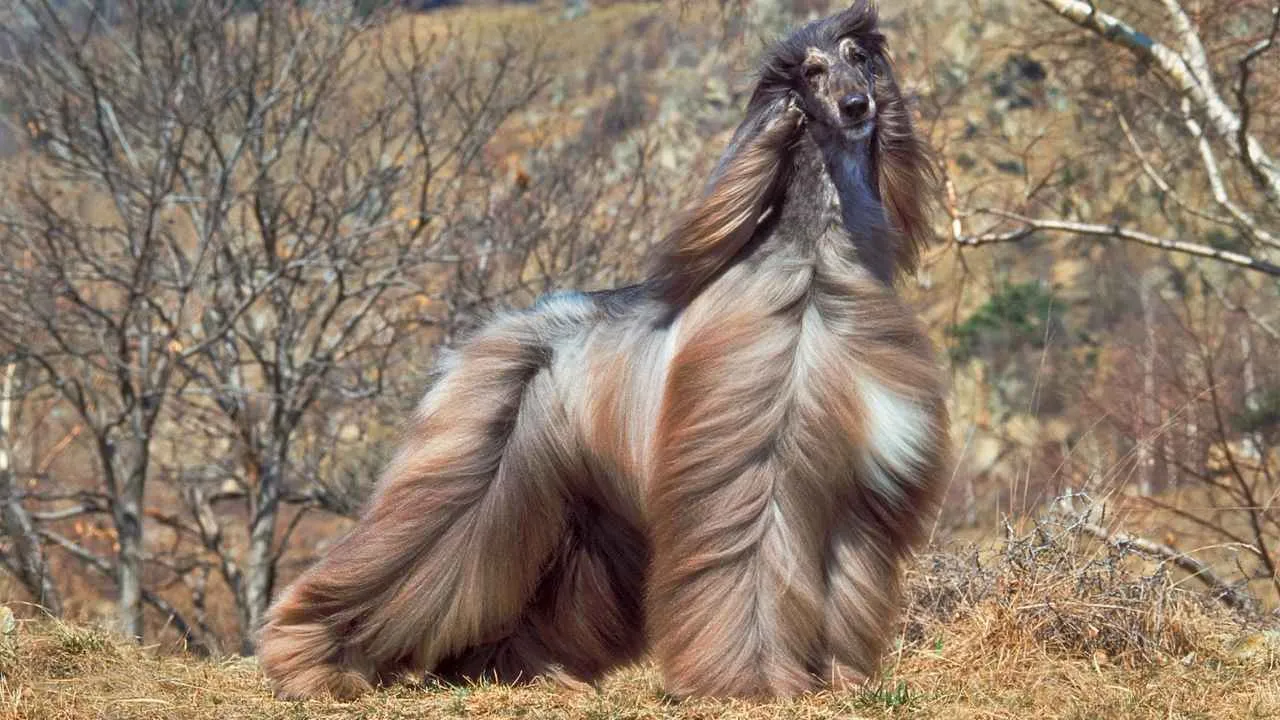
The Afghan Hound is the runway model of the dog world—stunning to look at, but famously difficult to train. Their independent personality isn’t a quirk; it’s a core trait shaped by their history as hunting dogs bred to make quick decisions without human direction.
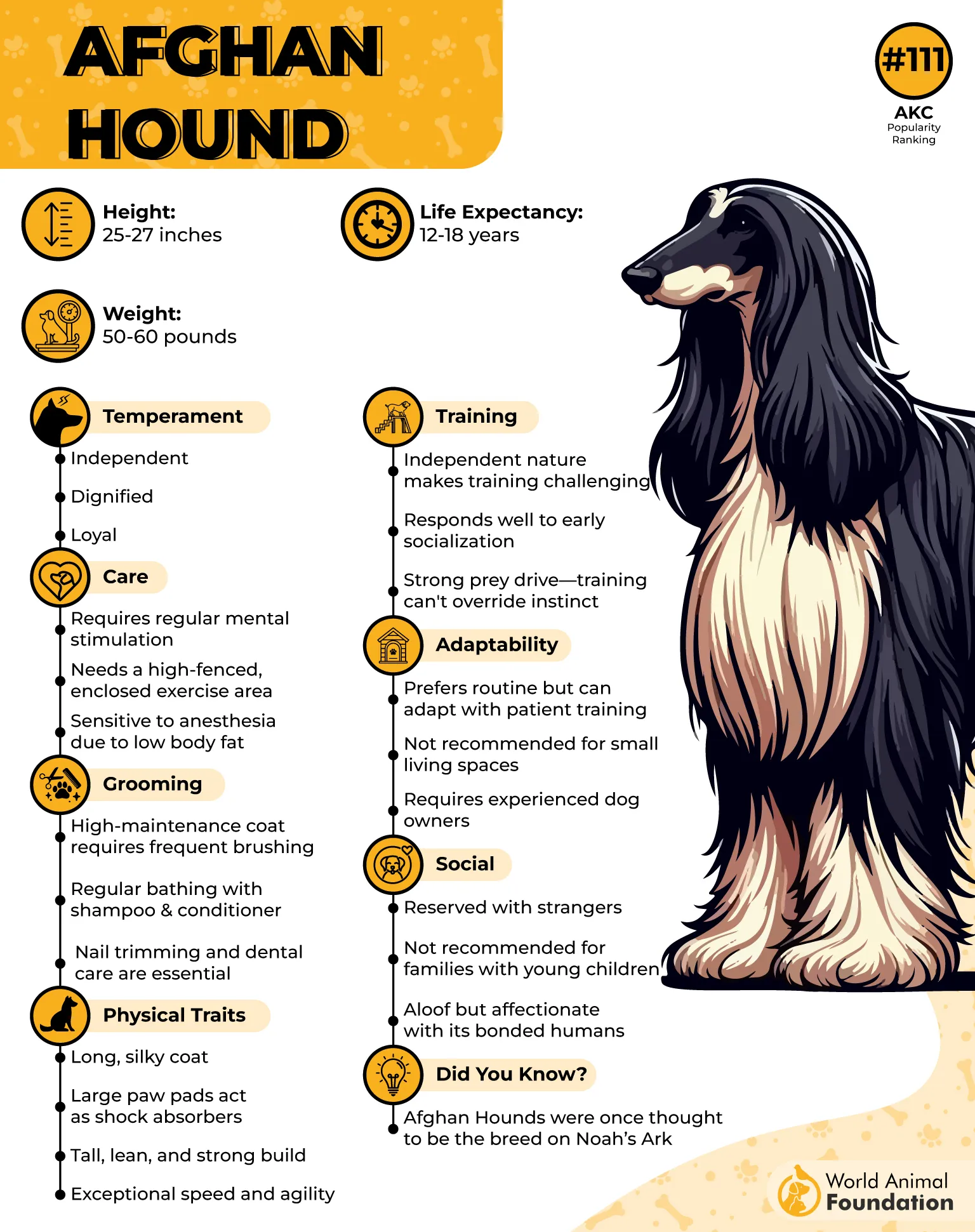
That autonomy often translates into what owners call “selective hearing.” Training an Afghan Hound isn’t about dominance—it’s about respect, timing, and figuring out what holds their interest long enough to keep them engaged.
Graceful but strong: Their dignified demeanor hides a fierce, stubborn streak—they’ll often pretend they didn’t hear a command.
High-maintenance coats: Their silky, flowing coat is as stunning as it is demanding, requiring regular grooming to maintain.
Speed demons: They are incredibly fast and agile, with a strong chase instinct due to their sighthound heritage.
Quiet observers: Not known for barking, they’re usually calm and reserved, but alert and aware of their surroundings.
9. Airedale Terrier
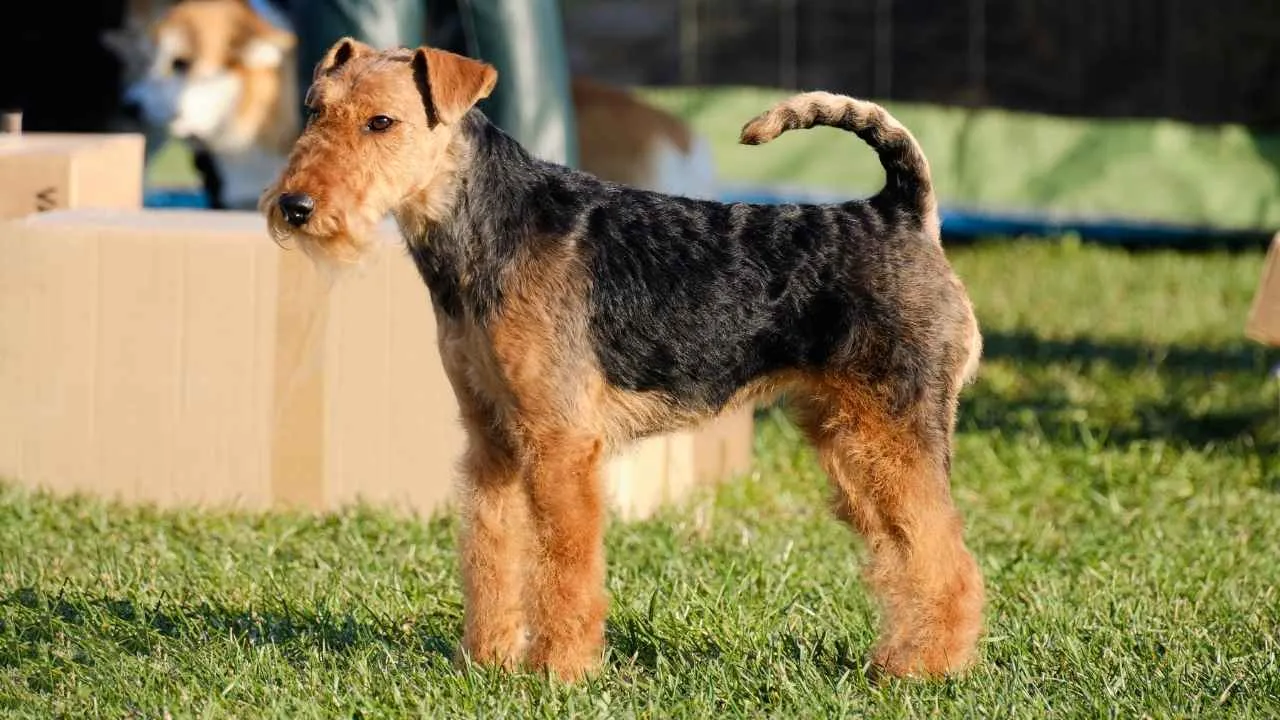
Often called the “King of Terriers,” the Airedale Terrier is bold, smart, and endlessly curious. With roots bred for hunting and guarding, this breed doesn’t back down from a challenge, and that includes you.
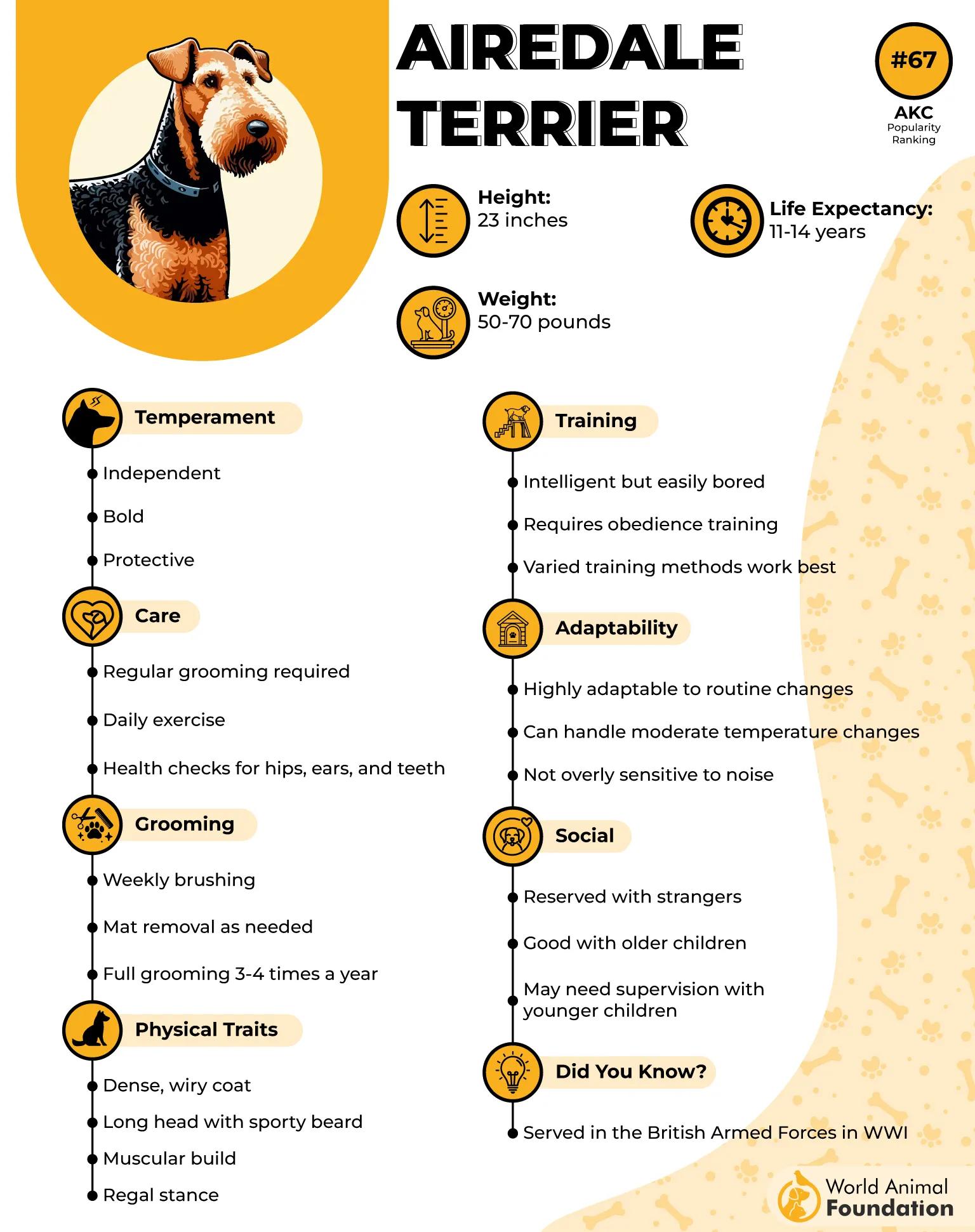
Airedales have a strong-willed nature and are known to test boundaries, especially during training. But their loyalty, versatility, and sense of fun make them a rewarding choice for pet parents who can match their energy and focus.
Natural leaders: Airedales tend to take charge in a household and need clear, confident direction from their person.
Energetic learners: They excel in advanced training and agility but can become bored if tasks aren’t stimulating.
Bold and brave: Originally bred to hunt large game and serve in wartime roles, their courage still shines through.
Watchful and alert: Make excellent watchdogs with a keen eye for detail and a bark to back it up.
Playful yet stubborn: Love games, but their independent streak can make them resistant to repetitive commands.
Grooming commitment: Their wiry coat needs regular trimming and upkeep to stay healthy and clean.
Conclusion
Living with a stubborn dog isn’t about winning battles—it’s about learning to work with a personality that refuses to be pushed around. These dogs aren’t being difficult to annoy you; they’re just putting their instincts, intelligence, and independence first. That can leave even experienced parents feeling frustrated, especially when basic commands go ignored or training sessions stall.
But here’s the payoff: when you earn the respect of a strong-willed dog, the bond runs deep. With patience, consistent positive training, and a healthy sense of humor, stubborn breeds can become the most rewarding companions out there.


